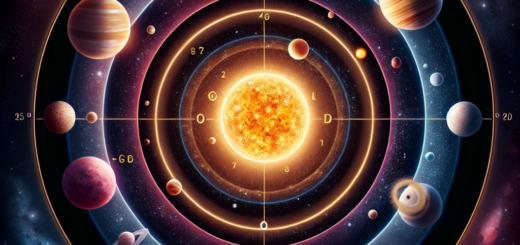The Fascinating Dynamics of Planetary Systems and Their Moons
Planetary systems are complex and fascinating structures that consist of planets orbiting around a central star. These systems often include moons, which are natural satellites that orbit around planets. The dynamics of these planetary systems and their moons are intricate and constantly evolving, providing scientists with a wealth of information about the formation and evolution of our solar system and others.
One of the most intriguing aspects of planetary systems is the interaction between planets and their moons. Moons play a crucial role in the stability and dynamics of their parent planets. For example, the Earth’s moon helps to stabilize its axial tilt, which in turn affects the planet’s climate and seasons. Moons can also influence the tides on their planets, as seen with Earth’s ocean tides being influenced by the gravitational pull of the moon.
The gravitational interactions between planets and their moons can also lead to interesting phenomena such as tidal heating, where the gravitational forces between the two bodies cause friction and heat to be generated within the moon. This can result in geological activity such as volcanism and tectonic activity, as seen on Jupiter’s moon Io.
In some cases, moons can even have their own moons, known as submoons or moonlets. These smaller bodies can orbit around moons, creating even more complex dynamics within the planetary system. One example of this is Saturn’s moon Dione, which has a small moonlet called Helene orbiting around it.
The study of planetary systems and their moons has provided scientists with valuable insights into the formation and evolution of our own solar system. For example, the presence of moons around gas giants like Jupiter and Saturn has led to theories about how these planets formed from a swirling disk of gas and dust. Moons can also provide clues about the conditions in the early solar system, such as the presence of water ice on moons like Europa and Enceladus, which may indicate the potential for life beyond Earth.
In recent years, advances in technology have allowed scientists to discover new moons and study existing moons in greater detail. For example, the Cassini spacecraft provided unprecedented views of Saturn’s moons and their interactions with the planet, while the Hubble Space Telescope has helped to identify new moons around distant planets.
Overall, the dynamics of planetary systems and their moons are a rich and complex field of study that continues to yield exciting discoveries and insights into the workings of our universe. As scientists continue to explore and study these systems, we can look forward to uncovering even more mysteries and unlocking the secrets of our cosmic neighborhood.













